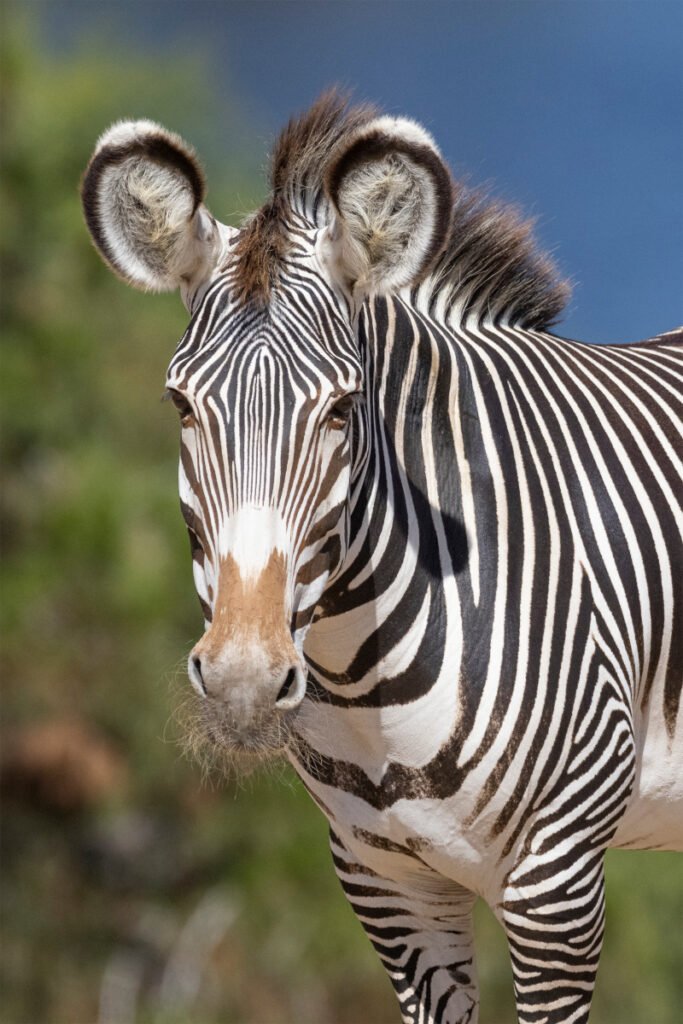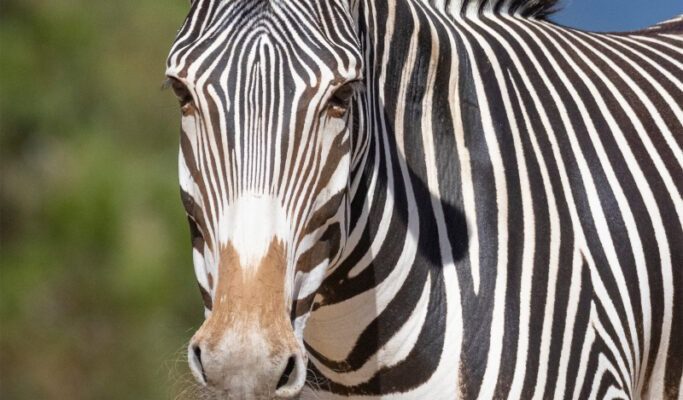
Imagine sitting down with a cup of coffee, chatting about animals that challenge our perceptions of intelligence. You might picture dolphins solving puzzles or monkeys using tools. But what about zebras? It turns out, these equine wonders can reflect a level of intelligence that’s both surprising and impressive. Let’s dive into the cognitive abilities and behaviors of Grevy’s zebras and explore how they interact with their world, communicate, and even problem-solve.
Understanding Grevy’s Zebras
Grevy’s zebras are not your average zebras. They’re the largest species of zebra, with distinctive features. Their narrow stripes are closer together, and they boast a unique body shape compared to their more common relatives. Found primarily in Kenya and Ethiopia, these zebras have adapted to semi-arid habitats, which makes their survival quite remarkable.
Their size and appearance aren’t just for show; they play a role in their behavior and interactions. Grevy’s zebras are known for being more solitary than other zebra species, often living in smaller groups. This social structure affects how they communicate and learn from one another. Like a group of friends gathering to solve a mystery, zebras use their environment and social cues to navigate challenges.
Cognitive Abilities of Grevy’s Zebras
You might be wondering, what actually makes a zebra smart? Well, Grevy’s zebras demonstrate a variety of cognitive abilities that show they’re more than just beautiful animals. Their intelligence can be seen in several ways, including their problem-solving skills, memory, and social interactions.
First off, zebras exhibit problem-solving skills that can really surprise you. They can navigate through challenging terrains or figure out how to open gates or access food. Imagine trying to reach a delicious snack, using your wits to manipulate your surroundings—that’s what these zebras do! Observations have suggested that Grevy’s zebras can learn through trial and error, which is a key indicator of intelligence.
Communication: A Vital Skill
Another area where Grevy’s zebras shine is communication. They use a range of vocalizations and body language to express themselves. From loud braying sounds to subtle movements of their ears and tails, these zebras have a rich language that keeps them connected in their environment.
Their ability to communicate effectively is crucial, especially since they often roam in smaller groups. Imagine a friend signaling to you from across a crowded room; that’s how these zebras maintain social bonds and warn each other of potential threats. The nuances of their communication help them navigate their environment and reinforce social hierarchies, which is vital for survival.
The Role of Social Learning
One fascinating aspect of Grevy’s zebras is their capacity for social learning. When younger zebras observe the actions of adults, they gain important skills and information. This helps them learn about food sources, predator avoidance, and social dynamics. It’s like when kids learn to ride a bike by watching their older siblings; they pick up tricks and tips just by observing.
This social learning aspect is critical for their adaptability. In changing environments, those zebras that can learn from their peers are more likely to thrive. They can shift their behaviors and strategies based on the knowledge they gather from others.
Behavioral Insights: Grazing and Movement
When it comes to behavior, Grevy’s zebras are quite fascinating. Their grazing habits provide insights into their intelligence. Unlike other herbivores that might stick to specific plants, Grevy’s zebras are selective grazers. They often switch between different types of grasses based on availability, which indicates a level of critical thinking about their diet.
Additionally, their movement patterns are quite strategic. They often travel long distances to find water and food, and they understand seasonal changes in their habitat. Picture a group of friends planning a road trip, carefully mapping out stops along the way to make the journey enjoyable—that’s how these zebras approach their daily lives.
Adaptability in Changing Environments
Adaptability is a hallmark of intelligence, and Grevy’s zebras showcase this trait beautifully. As their environment changes, whether due to drought or human encroachment, these zebras adjust their behaviors. They might alter their grazing patterns, shift their social groups, or even migrate to find better conditions.
This kind of adaptability is crucial for their survival, especially in a world where habitats are constantly changing. It’s like having a toolbox full of skills; when faced with a challenge, these zebras can pick the right tool to thrive.
The Importance of Conservation
Understanding the intelligence and behavior of Grevy’s zebras is not just an academic exercise—it has real-world implications. With their numbers dwindling due to habitat loss and hunting, it’s crucial to recognize the value of these creatures beyond their looks.
By supporting conservation efforts, we help protect not just the zebras but the entire ecosystem they’re a part of. Healthy ecosystems support diverse wildlife and maintain the balance of nature. When we take action to preserve habitats, we ensure that animals like Grevy’s zebras can continue to thrive and showcase their remarkable abilities.
How You Can Help
You may be wondering how you can contribute to the conservation of Grevy’s zebras. Here are a few actions you can take:
- Support wildlife conservation organizations working to protect Grevy’s zebras and their habitats.
- Educate others about the importance of preserving biodiversity.
- Consider eco-tourism opportunities that benefit local communities and wildlife.
Each small action counts and can make a difference in ensuring future generations can appreciate these amazing animals.
Wrapping Up: The Smarts of Grevy’s Zebras
So, how smart is a Grevy’s zebra? The answer is quite impressive. Their cognitive abilities, communication skills, and adaptability paint the picture of a highly intelligent species capable of navigating the complexities of their environment and social structures. Just like we celebrate human intelligence, it’s essential to acknowledge the remarkable smarts of these unique zebras.
Next time you see a Grevy’s zebra, take a moment to appreciate not only their stunning stripes but also their cleverness. By understanding their intelligence and supporting conservation efforts, we can ensure these beautiful animals continue to thrive in the wild. After all, every stripe tells a story worth preserving.

